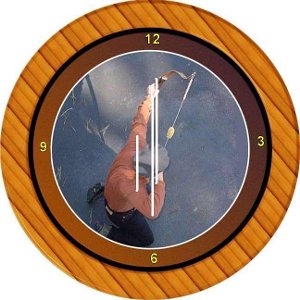Seems like every other day there's a new post here or on PowWow, asking what spine/type arrows to shoot, and the associated problems in finding the right arrow through tuning.
First, this is not intended to be a comprehensive guide. I am an amateur compared to a lot of guys here. My experience is limited to a few longbows and recurves between 45-52@28, and shooting primarily Easton aluminums or Carbon Express Heritage 150's. I use the bare shaft planing method of tuning. I'm positive that other methods can work, but I believe this to be the most reliable and achievable for most average shooters like me.
If you haven't looked at this webpage yet, then do so:
http://www.bowmaker.net/index2.htm -- you may have to click on "Bow Tuning" in the link menu at the top of the page. There's also a reliable spine chart there for aluminum/wood. Most, if not all of the stuff below is covered there.
If you can watch Black Widow's "Tour and Tuning" video, or a copy of "Masters of the Bare Bow" volume II, take a look at Ken Beck's tuning explanation. It's a good graphical representation of some things to look for. Rod Jenkins also has an excellent demonstration of Paper Tuning on MBB2.
Here are 10 litttle shooting and tuning tips (in no particular order) which I believe to be true:
1. Check your bare shaft results with point weight before cutting a shaft too short. -- If an arrow is showing too stiff/weak, shoot it with heavier and lighter points to confirm. All too often, guys will get false results from release or shelf contact issues, and end up with arrows that are too stiff to shoot well. The arrow saw is generally the only irreversible adjustment.
2. Adding anything to your bow or string will effect the way it shoots. Tune with your bow set up the way you intent to shoot it. Make small adjustments and only adjust one thing at a time. (brace height, nock point, shelf depth, arrow length, etc.)
3. With aluminum arrows, you can generally get away with cutting 1/4" to 1/2" at a time if you are sure the shaft is weak. With carbons 1/4" or less at a time is recommended. Carbon arrows react more dramatically to length changes than aluminum.
4. Adding weight/thickness (feathers, wraps, etc.) to the back end of the shaft will tend to stiffen the arrow. Bare shaft test with wraps (if you're using them on your arrows) and preferably feather quills already on it.
5. If your bow's riser is cut past center, build the sideplate out until your arrow is sitting at least some small degree of before center on the shelf. A good rule of thumb to use is that you should be able to see one arrow diameter (at the tip) sitting outside the string, with the bow held vertically and the string centered on the riser/limbs. I'll leave it to the more technically inclined members to explain further, but suffice to say this has held true for me. Not saying a center-shot bow can't be tuned, but it's beyond my abilities!
6. Don't worry about arrow nock vs. point orientation during bare shaft tuning. (angle the arrows stick in the target)
7. Do worry about nock orientation with fletched arrows, only if it's consistent! If your arrows are all sticking in the target with the nocks pointing one direction or another away from your line of flight, you've probably got a release or shaft/feather/shelf contact issue. You may be able to fix it by adjusting the brace height, nocking point position, building out the side plate, or cleaning up your release. Don't assume your arrows are too stiff or weak based on the angle they're sticking in the target.
8. If you're getting consistent, reliable results with bare shaft tuning, but poor flight with feathers, it's probably your release/form that's at fault. Sooo many things can affect arrow flight! Plucking the string, collapsing , and/or torquing the bow sting or the bow, are just a few examples. A lot of people are capable of concentrating on making a few good releases when bare shaft testing, but will drop back into bad habits shortly after fletching their arrows and shooting for two hours in the backyard!
9. Shoot bare shafts with your bow held vertical, regardless of how you shoot normally. The arrow is flexing against, and then away from, the shelf and side plate at release. Canting the bow during bare shaft testing will make interpreting the results more difficult.
10. An arrow that is slightly weak in spine has always shot better for me than one that is slightly stiff, with a less-than-perfect release. YMMV. Tune for perfect flight, but don't get so wrapped up in it that the fun goes away!
Like I said, I'm not an expert, but what I wrote above are some of the things I've had to learn the hard way. My hope is to save someone else some money and time. An arrow saw was one of the best and worst investments I ever made. Once I learned to cut arrows only after making sure that other variables were taken care of, it was worth it's weight in gold. Before I learned these things, it was just a tool for producing too short, too stiff arrows, and another trip to the arrow store!
Feel free to add a tip, or if you disagree with anything I wrote, post that too. The aim here is to get new archers shooting the right arrow. Seeing a perfect ball of feathers spinning into your target, right where you were aiming, is great fun...and that's kind of the point after all.





